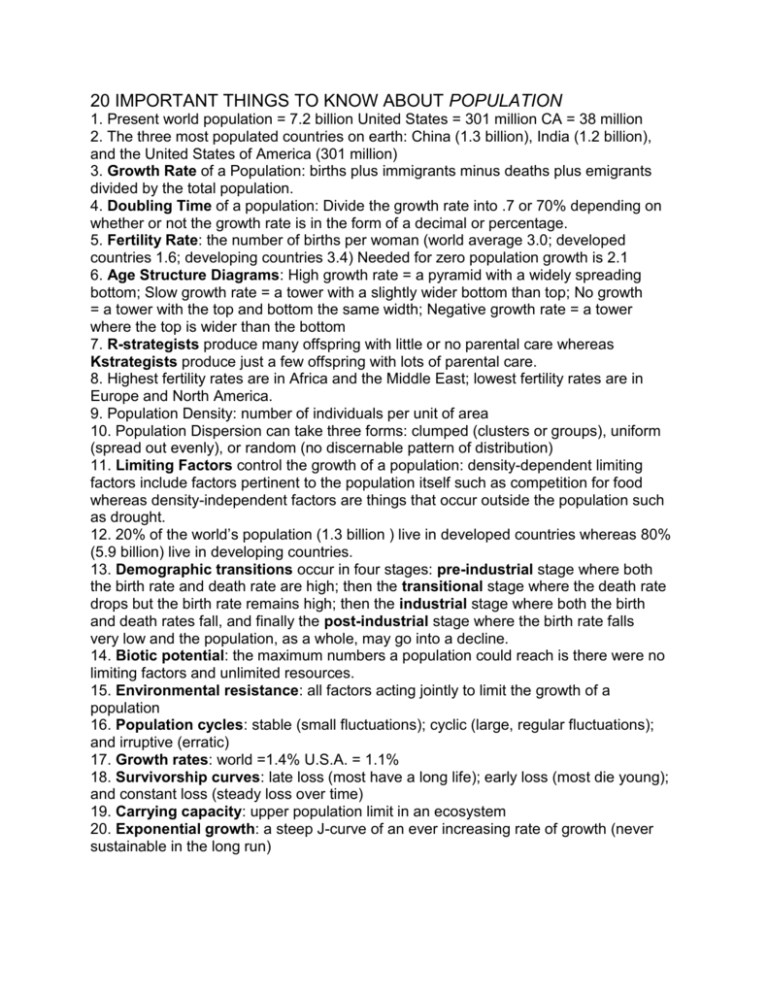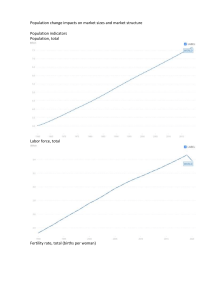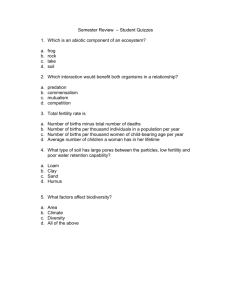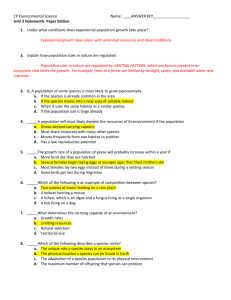20 Important things to know
advertisement

20 IMPORTANT THINGS TO KNOW ABOUT POPULATION 1. Present world population = 7.2 billion United States = 301 million CA = 38 million 2. The three most populated countries on earth: China (1.3 billion), India (1.2 billion), and the United States of America (301 million) 3. Growth Rate of a Population: births plus immigrants minus deaths plus emigrants divided by the total population. 4. Doubling Time of a population: Divide the growth rate into .7 or 70% depending on whether or not the growth rate is in the form of a decimal or percentage. 5. Fertility Rate: the number of births per woman (world average 3.0; developed countries 1.6; developing countries 3.4) Needed for zero population growth is 2.1 6. Age Structure Diagrams: High growth rate = a pyramid with a widely spreading bottom; Slow growth rate = a tower with a slightly wider bottom than top; No growth = a tower with the top and bottom the same width; Negative growth rate = a tower where the top is wider than the bottom 7. R-strategists produce many offspring with little or no parental care whereas Kstrategists produce just a few offspring with lots of parental care. 8. Highest fertility rates are in Africa and the Middle East; lowest fertility rates are in Europe and North America. 9. Population Density: number of individuals per unit of area 10. Population Dispersion can take three forms: clumped (clusters or groups), uniform (spread out evenly), or random (no discernable pattern of distribution) 11. Limiting Factors control the growth of a population: density-dependent limiting factors include factors pertinent to the population itself such as competition for food whereas density-independent factors are things that occur outside the population such as drought. 12. 20% of the world’s population (1.3 billion ) live in developed countries whereas 80% (5.9 billion) live in developing countries. 13. Demographic transitions occur in four stages: pre-industrial stage where both the birth rate and death rate are high; then the transitional stage where the death rate drops but the birth rate remains high; then the industrial stage where both the birth and death rates fall, and finally the post-industrial stage where the birth rate falls very low and the population, as a whole, may go into a decline. 14. Biotic potential: the maximum numbers a population could reach is there were no limiting factors and unlimited resources. 15. Environmental resistance: all factors acting jointly to limit the growth of a population 16. Population cycles: stable (small fluctuations); cyclic (large, regular fluctuations); and irruptive (erratic) 17. Growth rates: world =1.4% U.S.A. = 1.1% 18. Survivorship curves: late loss (most have a long life); early loss (most die young); and constant loss (steady loss over time) 19. Carrying capacity: upper population limit in an ecosystem 20. Exponential growth: a steep J-curve of an ever increasing rate of growth (never sustainable in the long run)











